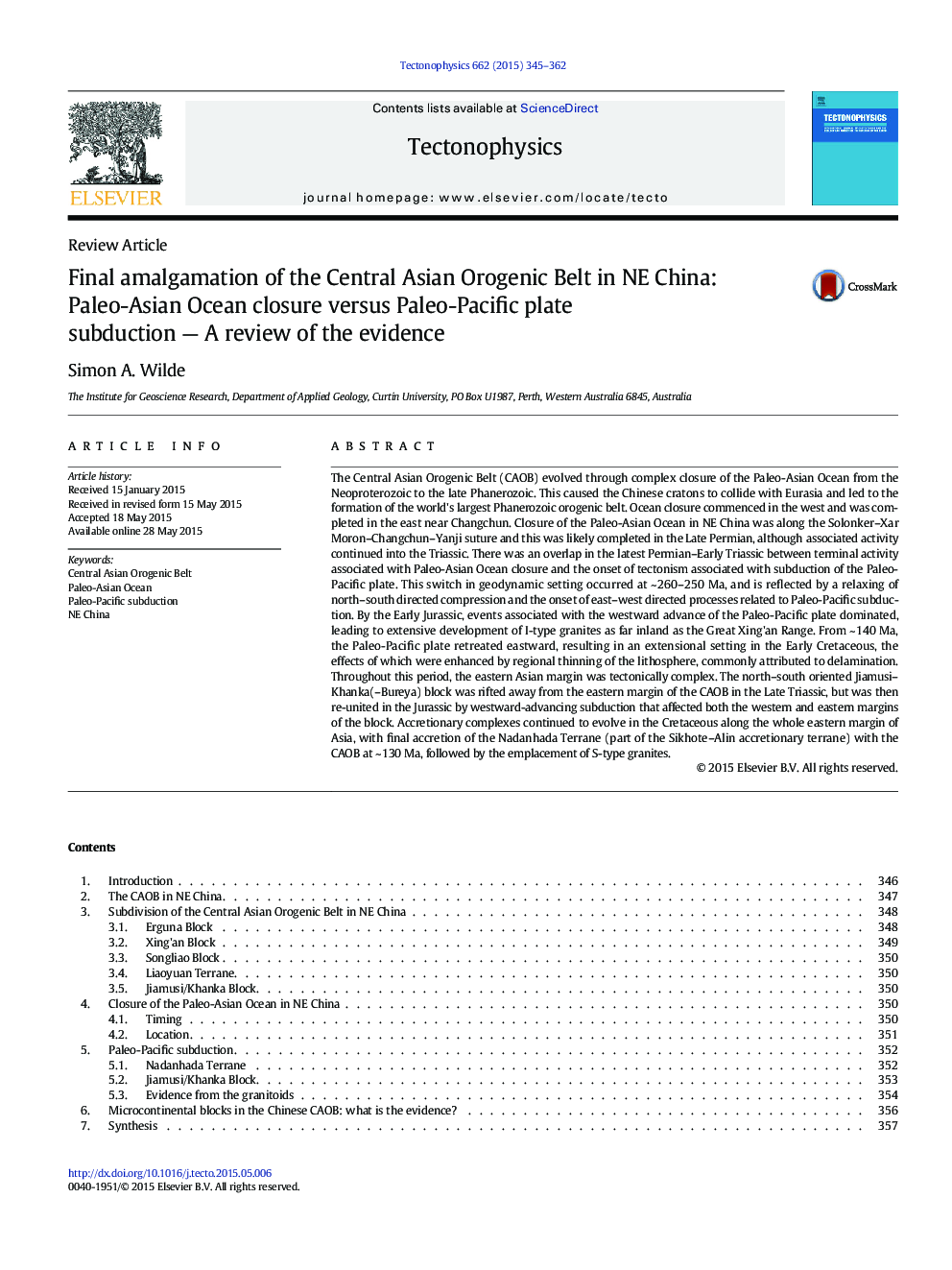| کد مقاله | کد نشریه | سال انتشار | مقاله انگلیسی | نسخه تمام متن |
|---|---|---|---|---|
| 4691475 | 1636733 | 2015 | 18 صفحه PDF | دانلود رایگان |
• Paleo-Asian Ocean closed diachronously along Solonker suture.
• Closure completed in late Permian
• Paleo-Pacific subduction affected eastern CAOB.
• Precambrian rocks rare in CAOB of NE China
• Chinese terranes originated in Siberia
The Central Asian Orogenic Belt (CAOB) evolved through complex closure of the Paleo-Asian Ocean from the Neoproterozoic to the late Phanerozoic. This caused the Chinese cratons to collide with Eurasia and led to the formation of the world's largest Phanerozoic orogenic belt. Ocean closure commenced in the west and was completed in the east near Changchun. Closure of the Paleo-Asian Ocean in NE China was along the Solonker–Xar Moron–Changchun–Yanji suture and this was likely completed in the Late Permian, although associated activity continued into the Triassic. There was an overlap in the latest Permian–Early Triassic between terminal activity associated with Paleo-Asian Ocean closure and the onset of tectonism associated with subduction of the Paleo-Pacific plate. This switch in geodynamic setting occurred at ~ 260–250 Ma, and is reflected by a relaxing of north–south directed compression and the onset of east–west directed processes related to Paleo-Pacific subduction. By the Early Jurassic, events associated with the westward advance of the Paleo-Pacific plate dominated, leading to extensive development of I-type granites as far inland as the Great Xing'an Range. From ~ 140 Ma, the Paleo-Pacific plate retreated eastward, resulting in an extensional setting in the Early Cretaceous, the effects of which were enhanced by regional thinning of the lithosphere, commonly attributed to delamination. Throughout this period, the eastern Asian margin was tectonically complex. The north–south oriented Jiamusi–Khanka(–Bureya) block was rifted away from the eastern margin of the CAOB in the Late Triassic, but was then re-united in the Jurassic by westward-advancing subduction that affected both the western and eastern margins of the block. Accretionary complexes continued to evolve in the Cretaceous along the whole eastern margin of Asia, with final accretion of the Nadanhada Terrane (part of the Sikhote–Alin accretionary terrane) with the CAOB at ~ 130 Ma, followed by the emplacement of S-type granites.
Journal: Tectonophysics - Volume 662, 1 November 2015, Pages 345–362
